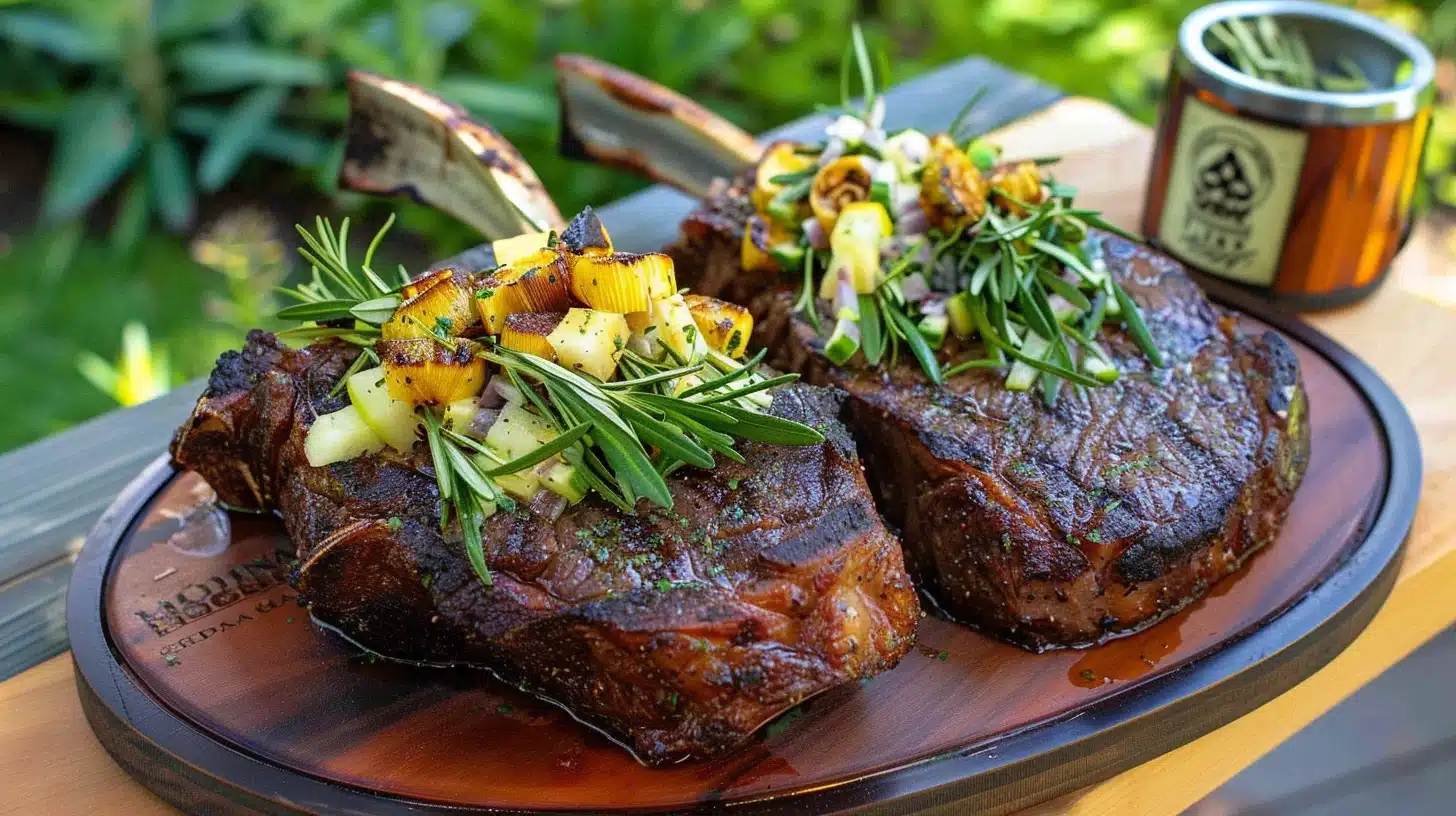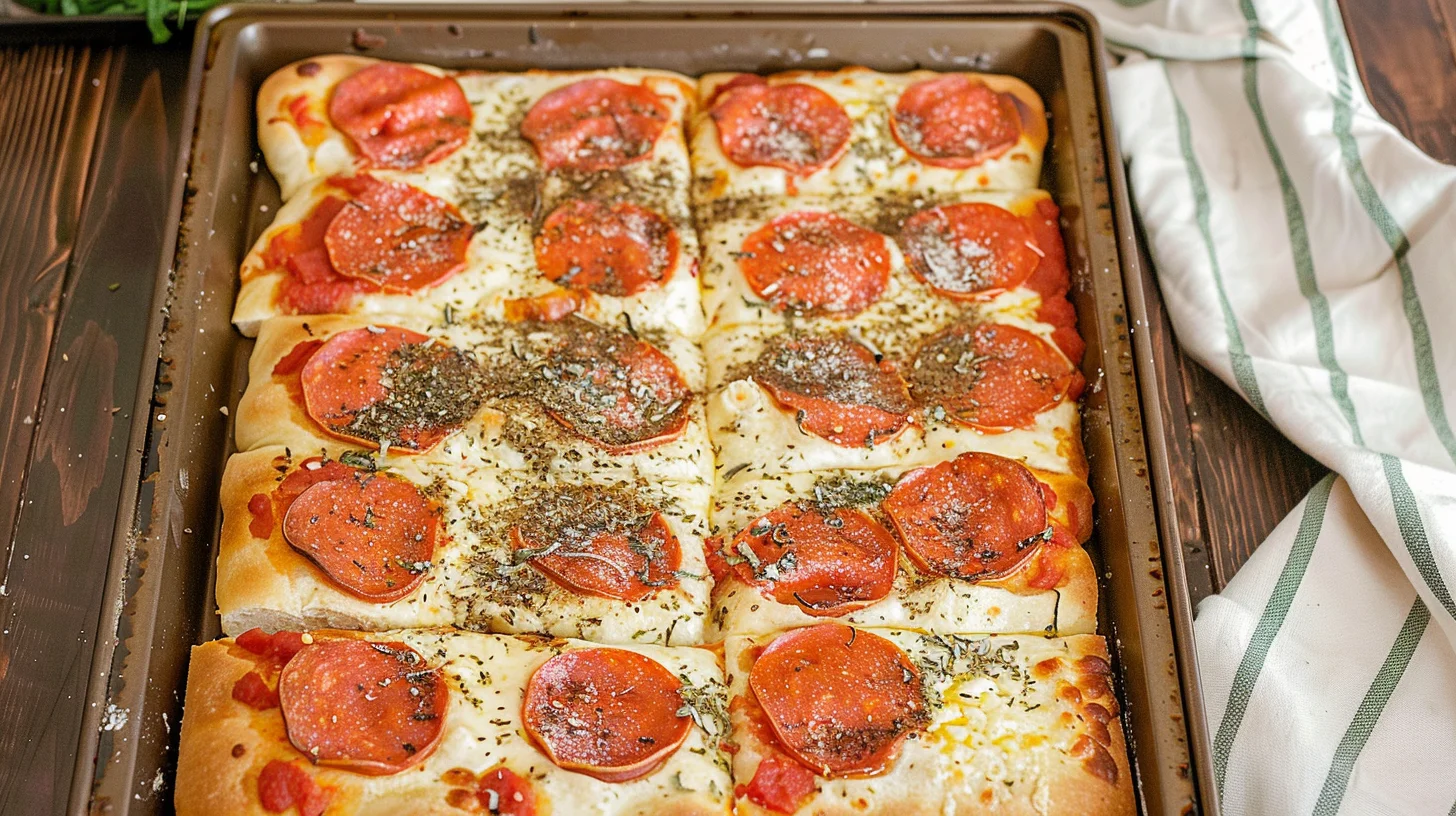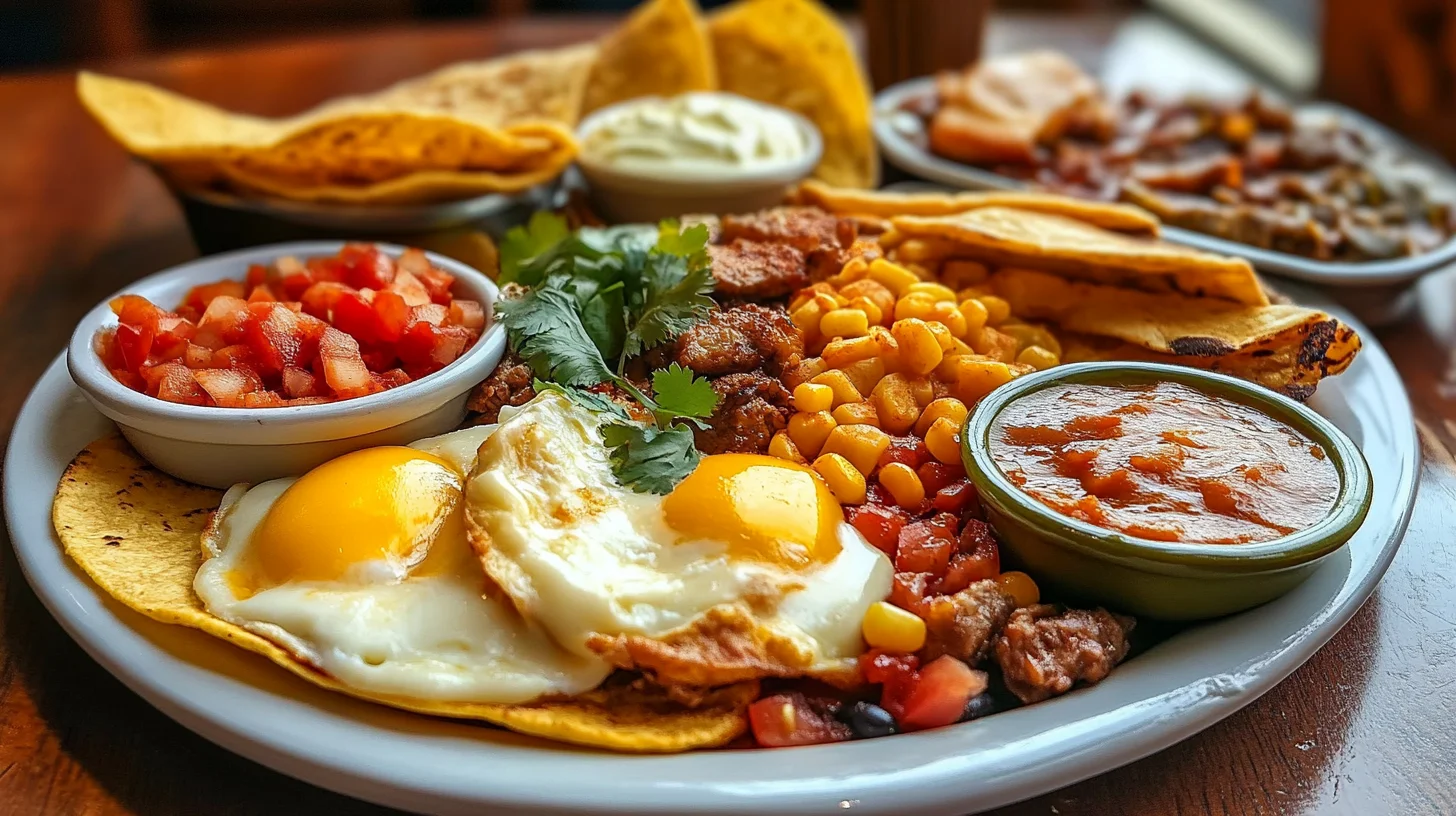There’s one steak that transformed my dining experiences; an experience-rich dish like the cowboy steak is both memorable and approachable. My initial curiosity about it arose from its massive size and rich fatty marbling; what exactly is a cowboy steak anyway? Simply put, it is a ribeye cut which retains its bone for an accessible but adventurous meal experience.
The every bite I took of the first meal made me realize why the particular slice is such a very popular option for foodies. It’s like a superhero’s plate: delicious, smokey and delicious and ideal for sharing. When I learned to cook it, I realized I had to share this information with other people. Let’s discover the reason this particular cut is special and why it might be your new favorite.
Key Takeaways
- Cowboy steak is a large, bone-in ribeye with extra marbling for rich flavor.
- Its bold presentation makes it a showstopper for special meals.
- High quality and tenderness set it apart from other steaks.
- Mastering its cooking method brings out its full taste potential.
- Understanding what a cowboy steak is unlocks a new level of grilling joy.
Discovering what is a cowboy steak: My Personal Journey
I first tried cowboy steak at a busy steakhouse. I knew about common cuts, but was eager to try this one. The menu promised a bold taste, so I decided to give it a shot. That choice changed how I see steaks forever.
My First Encounter with Cowboy Steak
The cowboy steak looked amazing when it came out. Its crispy outside and marbling suggested it would be rich. The first bite was tender and full of flavor, unlike any steak I’d had before. It was complex and stayed with me, making a lasting impression.
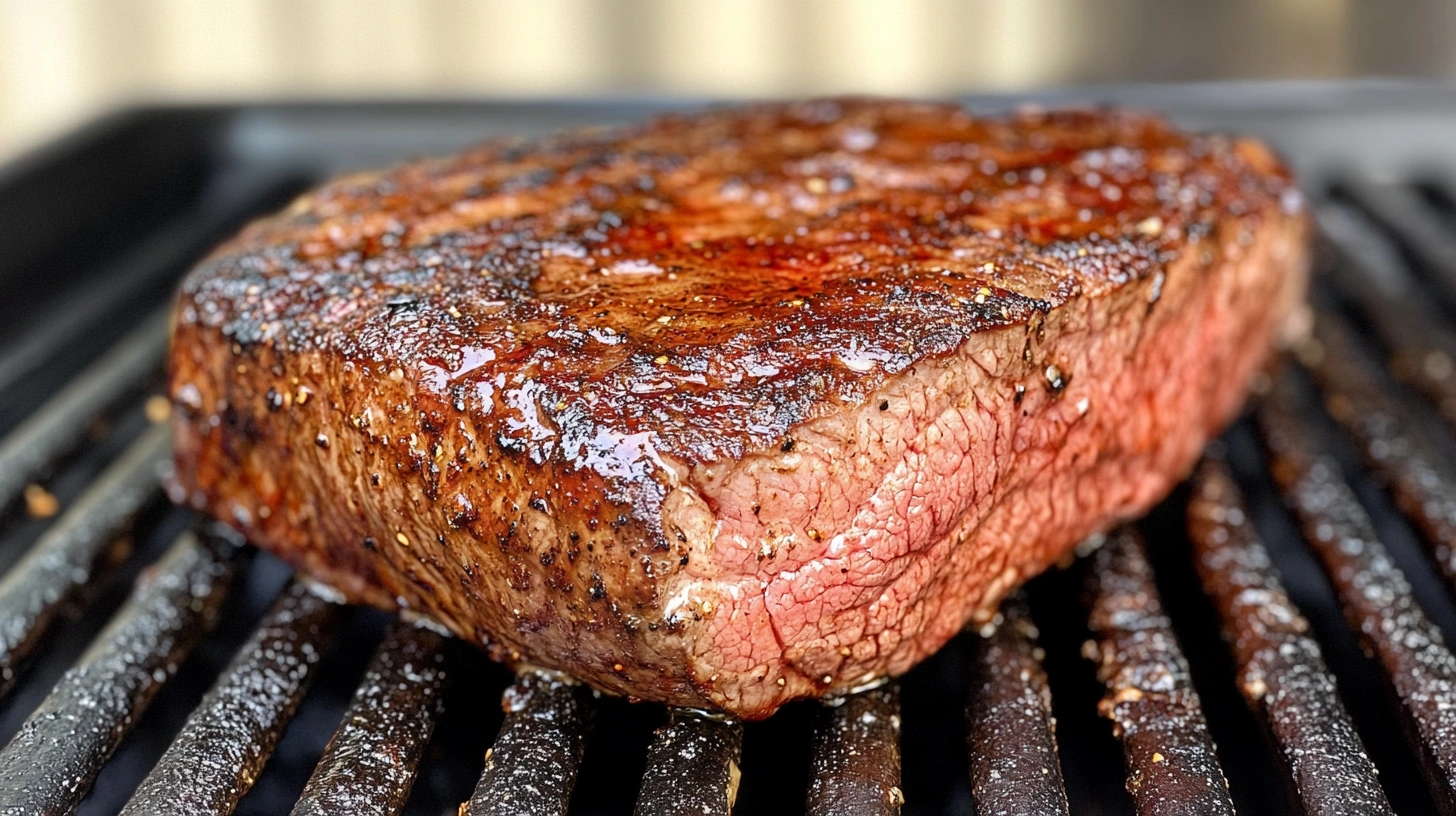
The Unique Charm of This Cut
So, what makes cowboy steak special? Here are a few reasons:
- Generous marbling ensures melt-in-your-mouth texture
- Bone-in design locks in juices during cooking
- Subtle sweetness contrasts with savory notes
It’s adored for its bold flavor and softness. Grilled or seared it showcases the beef’s natural flavor. Every bite reminds you of that first meal, which was simple and highlighted its exquisiteness.
The Bold History and Allure of Cowboy Steak
My interest in the cowboy ribeye grew as I learned about its origins. It startedin the 19th century on ranches. Cowboys needed strong, filling meals during cattle drives.
This cut was perfect for them. It was tender and packed with flavor. Over time, it became a symbol of luxury.
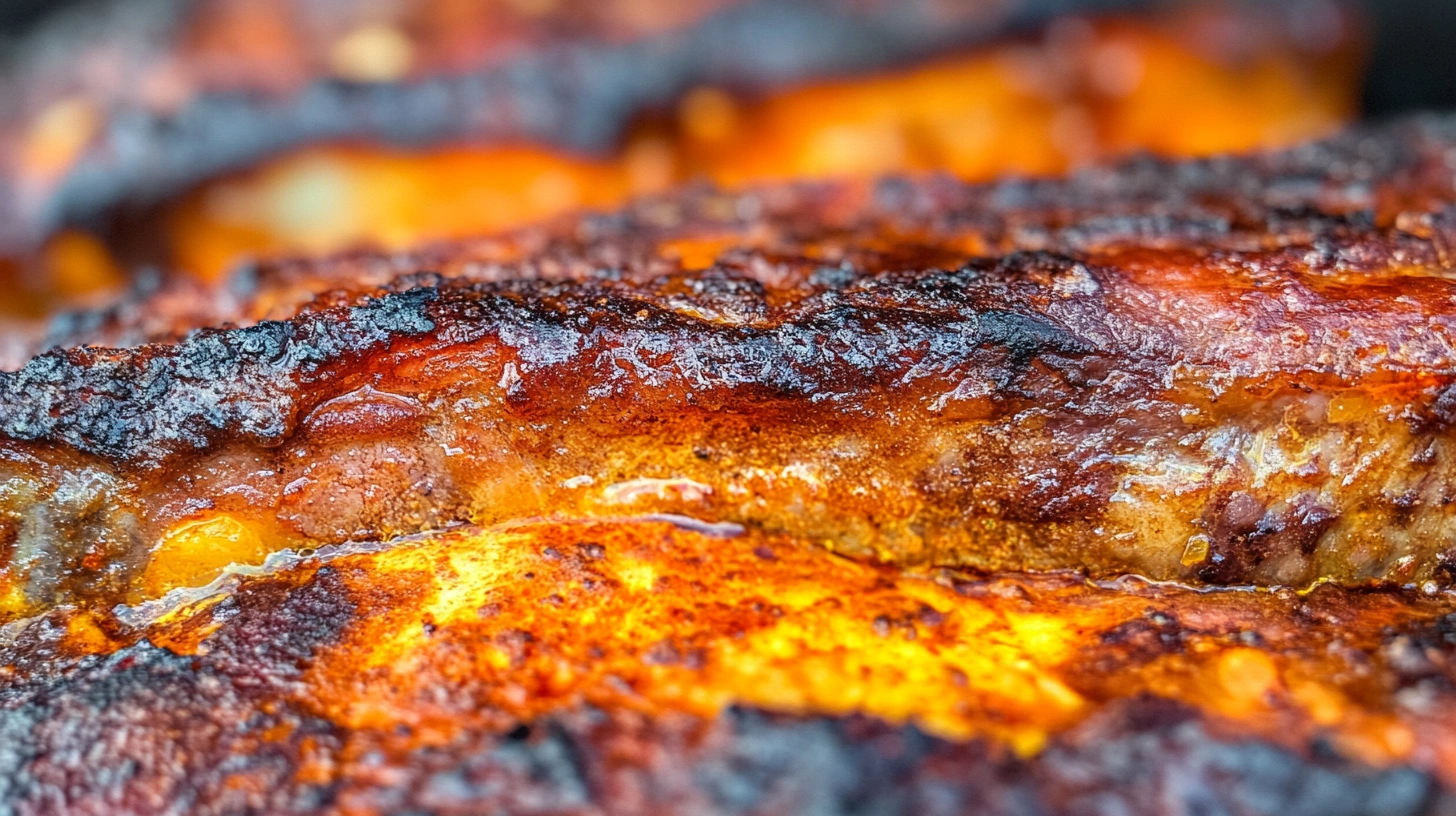
Butchers adored their cowboy-style Ribeye for it’s marbling, as well as delicious taste. The name of the dish brings back memories of an image of Wild West. It was an age of simple, yet satisfying meals.
Now, it’s celebrated for mixing tradition with modern cooking. This makes it a favorite in steakhouses.
The appeal of the cowboy ribeye comes from its humble beginnings and the gourmet appeal. It’s adored by chefs and cooks at home for its robust flavor. Every bite tells a tale of its rich heritage and the reason it’s an absolute favorite.
Selecting the Perfect Cowboy Ribeye Cut
Choosing the right cut is key when cooking cowboy steak. Here’s how to pick a prime ribeye for rich flavor and tenderness.
Understanding Different Cuts
A cowboy ribeye is known for its thick, well-marbled meat. Look for a cut with good fat distribution and muscle texture. Avoid lean cuts—fat is where the juicy flavor is.
- Thickness: Aim for 1.5–2 inches to avoid drying out during cooking cowboy steak.
- Marbling: Opt for visible white streaks within the red meat—this ensures melt-in-your-mouth tenderness.
- Origin: Choose USDA Prime or Wagyu grades for superior quality.
Freshness and Quality Indicators
Here’s what to inspect before buying:
| Check For | What to Look For | Why It Matters |
| Color | Ruby-red hue with no gray patches | Fresh meat retains vibrant color |
| Texture | Firm to the touch, not sticky | Sign of proper storage and freshness |
| Fat | White or creamy-colored fat | Yellow fat indicates old meat |
Mastering the Art of Cooking Cowboy Steak
Every great cowboy steak recipe relies on technique. Over years, I’ve learned patience and precision are key. Start by letting the steak rest at room temperature for even cooking.
- Preheat your grill or skillet to high heat.
- Pat the steak dry with paper towels for better sear.
- Season both sides with kosher salt and freshly ground black pepper.
- Sear for 3-4 minutes on each side to form a crust.
- Lower heat, finish cooking to desired doneness (use a thermometer for accuracy).
- Let it rest 5-7 minutes before slicing against the grain.
Temperatures are crucial. Here’s a quick guide:
| Method | Temperature | Time | Target Temp |
| Grill | 450–500°F | 8–12 mins total | 130°F (medium-rare) |
| Oven | 400°F | 15–20 mins | 125–135°F |
| Skillet | High sear, then medium | 6–10 mins total | 120–130°F |
A cowboy steak recipe is about timing, not just fire. Overcooking makes it tough, so use your thermometer. Resting is essential to keep juices in. Try different methods to find your favorite way to cook it!
My Favorite Cowboy Steak Recipe and Seasoning Tips
When I found out about cowboy steak, I knew the right recipe could make it even better. Here’s how I make mine, keeping it simple yet full of flavor.
Step-by-Step Recipe
- Prep the meat: Let the cowboy steak sit at room temperature for 30 minutes before cooking.
- Season generously with sea salt and freshly ground black pepper.
- Heat a cast-iron skillet or cowboy steak grill to high heat, adding a drizzle of avocado oil.
- Sear for 4-5 minutes on each side for medium-rare, using tongs to avoid piercing the meat.
- Rest the steak for 10 minutes before slicing against the grain.
Essential Seasoning Techniques
For a standout flavor profile, I blend these seasonings:
- Smoked paprika for depth
- Garlic powder and onion powder for richness
- A touch of brown sugar to balance bitterness
| Ingredient | Quantity | Purpose |
| Sea salt | 1 tbsp per 1.5 lbs steak | Enhances natural juices |
| Black pepper | Generous grind | Sharpens umami notes |
| Herb mix (thyme, rosemary) | 1 tsp | Earthy aroma boost |
Try out these combinations to find your favorite. The secret? Let the steak’s quality speak for itself with just the right amount of seasoning.
Exploring the Unique Cut: Cowboy vs. Other Steaks
When I first compared cowboy steak to other cuts, I noticed its bold flavor stood out. Unlike tenderloin’s mild taste or filet’s lean texture, a cowboy steak’s marbling creates a rich, buttery mouthfeel. The cowboy steak seasoning I use enhances its natural juiciness without overpowering the meat.
- Texture: Thick and tender with a visible fat cap that melts during cooking.
- Flavor: More robust than sirloin, with a hint of smokiness when seasoned properly.
- Cooking: Suits high-heat methods better than skirt or flank steaks.
What is it that makes it special? Its size — often over 2 inches thick – lets the spice of the cowboy steak adhere to any surface. As opposed to cuts that are thin the thickness of this steak holds the heat well and requires less sauce. I’ve served it with basic blends of salt and pepper and using rosemary or garlic in the seasoning will reveal greater depths of flavor.
In comparison to T-bone the cowboy isn’t as bone-like however, it offers a constant marbling. The role of the seasoning is crucial, as it highlights the natural flavor of the meat, without obscuring the flavor. The next time you grill, you should try this cut. Its size and taste justifies its repute. It can be spiced simply or in a bold way, it’s an outstanding selection for anyone who grills.
Cowboy Steak vs. Tomahawk: Breaking Down the Differences
The cowboy steak and tomahawk are both bold cuts, but they have their differences. They both have bones, but their sizes, flavors, and styles are unique. Let’s explore these differences.
Comparative Characteristics
I’ve grilled both and noticed some key differences. Cowboy steaks are wider with a flat bone. Tomahawks, on the other hand, have a long, dramatic rib bone. The cowboy steak is tender and buttery, thanks to its marbling. The tomahawk steak is thicker and holds heat longer.
- Size: Cowboy averages 1-2 inches thick; tomahawk can reach 3 inches.
- Cooking time: Cowboy cooks faster due to thinner profile.
- Price: Cowboy often costs less than its fancy tomahawk cousin.
Taste and Presentation
Cowboy steak’s subtle smokiness is best enjoyed with simple how to cook cowboy steak methods like high-heat searing. Tomahawk’s robust flavor pairs well with bold rubs. The tomahawk’s bone makes a dramatic centerpiece, while the cowboy’s clean lines highlight the meat.
For either cut, focus on quality marbling. Cook cowboy steaks medium-rare to preserve tenderness. Tomahawks need lower heat to avoid drying out. Whether it’s a dinner party or a casual BBQ, knowing these differences ensures you choose the right cut every time.
Addressing the Price Tag: Why is Cowboy Steak So Expensive?
When I first noticed the piece of meat is known as called a cattle-barrel steak?, its price was what caught my attention. Every dollar tells an associated story. Let’s look at why this particular cut is so expensive.
The best quality doesn’t come cheap. Cowboy steak comes from the rib primal which is a portion of the cow’s top. It’s a large bone-in ribeye that is usually at or above 24 pounds. The marbling–the fat veins that render it tender–requires special breeding and maturation.
The use of top ranchers like Snake River Farms or Pat LaFrieda can also increase the cost.
Quality vs. Cost
- Rib primal cuts are rare, making them scarce.
- Quality feed and aging increase production time.
- Skilled butchers pick each steak, ensuring quality.
The Investment in Flavor
I’ve tried cheaper options, but nothing beats a grilled cowboy steak. Its buttery texture and strong flavor are worth the cost.
Grilling Secrets: Cowboy Steak on the Barbecue
When grilling, knowing is cowboy steak the same as tomahawk? is important. Both cuts are similar but need different grilling techniques. Cowboy steak’s thicker shape needs careful timing to keep it juicy.
Start by heating your grill to medium-high, about 400°F. Dry the steak, then season it well with salt and pepper. Place it on the grates.
- Preheat grill to 400°F and oil grates to prevent sticking.
- Sear for 4-5 minutes per side for medium-rare, checking internal temperature (130°F for rare, 145°F for medium).
- Let the steak rest 5-7 minutes post-cooking to retain moisture.
Cowboy steak cooks faster than tomahawk because it’s boneless. I only flip it once to keep the crust nice. Using a meat thermometer is crucial to avoid dryness.
Brushing the steak with garlic butter in the last 2 minutes adds flavor. Whether you compare it to tomahawk or not, following these steps ensures a tender and smoky steak.
Enhancing Flavor: Cowboy Steak Seasoning and Preparation Tips
Ever wonder why do they call it a cowboy steak? The name hints at its hearty beginnings. It’s a cut meant for bold, rustic cooking. To enhance its flavor, begin with the right seasonings. Here’s how I take this cut from good to great.
Marinade Ideas
Marinades bring out the depth. I prefer a mix of soy sauce, garlic, and olive oil. But feel free to get creative:
- Apple cider vinegar and smoked paprika for a tangy kick
- Bourbon-based marinades for a caramelized crust
- Lemon zest and rosemary for brightness
Herbs and Spices That Shine
Less is often more. Try these combos:
- Kosher salt and freshly cracked black pepper (the classic duo)
- Cajun seasoning blends for a smoky-sweet contrast
- Fresh thyme and garlic rubbed under the surface
Choosing the right seasonings for this cut is like finding the perfect horse. It’s all about precision and purpose. Experiment, but never forget the salt. A true cowboy steak needs seasoning as bold as its name.
FAQ
What is a cowboy steak?
The cowboy steak can be described as a large bone-in ribeye cut. It is renowned for its flavorful and delicious taste as well as tenderness. It’s a popular cut by those who enjoy steak.
It’s also known as”a cowboy ribeye. It’s got the longest rib bone creating a stunning appearance in the dish.
Is a cowboy steak the same as a tomahawk?
A cowboy steak and a tomahawk steak are similar but not the same. The tomahawk has a longer rib bone. This makes it look even more dramatic.
Both cuts are prized for their flavor. But the tomahawk is often larger and more expensive.
Why do they call it a cowboy steak?
The name “cowboy steak” brings to mind the rugged American West. It’s a cut that embodies the boldness and flavor of cowboy cooking. It’s perfect for grilling a big, satisfying steak.
What cut of meat is a cowboy steak?
A cowboy steak comes from the rib section of the beef. It’s essentially a bone-in ribeye. The marbling in this cut makes it rich in taste and tender.
Why is cowboy steak so expensive?
The cost of a cowboy steak depends on a number of aspects. The quality in the beef, source and the ability to butcher it all contribute to. Quality beef that is well-marbled and of high-quality is more expensive.
Its popularity also drives up the price. This makes it a bit of an investment for steak lovers.
What are some great cowboy steak seasoning tips?
When seasoning a cowboy steak, I use simple yet bold ingredients. Salt and black pepper are always a good start. You can also try garlic powder, onion powder, or smoked paprika to add more flavor.
How do I cook a cowboy steak?
The preparation of a steak called a cowboy can be prepared in various ways, but grilling is my preferred. Let the steak cool at room temperature before you then season it thoroughly, and then sear it on high temperature for several minutes on both sides.
After you have seared, lower the heat and cook until you are satisfied with the cookedness. Allow it to rest for a few minutes before cutting for the best flavor!
Conclusion
My experience with cowboy steak has taught me that it’s more than simply the food. This is an entire experience. From its rich and varied history to the process making it each step demonstrates why it’s unique. Its rich flavor and soft texture make it an excellent option for people who enjoy high-quality meats.
Although it’s expensive I believe it’s well worth the money. The problem of what makes cowboy steak priced so high? is answered by its high-end quality. The extra marbles, the careful butchering, and the attention to detail in raising cattle all contribute to its worth. Every bite is rich and is worth the price.
If you’ve read the book the recipe, you’ve noticed how easy techniques can improve the taste of the dish. Salting it with coarse salt, or grilling on a cast iron skillet will bring out the finest. It’s not only about the price, it’s about having the taste of a steak that blends tradition and contemporary cooking.
When you next visit the butcher, you should try a the cowboy steak. The process of choosing the best cut to grilling it is satisfying. It’s for me an experience of high-end quality and craftsmanship that merits an appearance on every foodie’s bucket list.
Looking for More Cooking Tips?
Check out:
- How to Grill the Perfect Tomahawk Steak
- Best beef bottom round Steak
- Garlic Butter Steak Bites and Potatoes
Enjoy your ultimate cowboy cut steak experience, and happy grilling!
Print
what is a cowboy steak
A Cowboy Steak is a thick-cut, bone-in ribeye known for its rich marbling, bold flavor, and impressive appearance. This premium steak is cut at least 2 inches thick, with a long, Frenched bone that enhances its presentation and helps retain moisture during cooking. Best prepared using grilling, pan-searing, or reverse searing, this steak delivers a perfect balance of tenderness and a crispy, flavorful crust. Whether seasoned simply with salt and pepper or paired with a garlic butter finish, the cowboy steak is a steakhouse favorite for meat lovers.
- Total Time: 30 minutes
- Yield: 1 cowboy steak
Ingredients
1 cowboy steak (bone-in ribeye, about 2 inches thick)
2 tbsp olive oil
1 tbsp kosher salt
1 tsp freshly ground black pepper
1 tsp garlic powder (optional)
2 tbsp unsalted butter
2 cloves garlic, smashed
2 sprigs fresh rosemary or thyme
Instructions
Prepare the Steak: Remove the cowboy steak from the refrigerator at least 30 minutes before cooking. Pat it dry with paper towels and rub with olive oil. Season generously with salt, pepper, and garlic powder.
Preheat the Grill or Pan: Heat a grill to high (450–500°F) or a cast-iron skillet over medium-high heat until hot.
Sear the Steak: Place the steak on the grill or skillet and sear for 3–4 minutes per side until a deep golden crust forms.
Indirect Cooking (If Grilling): Move the steak to a cooler part of the grill and cook over indirect heat until the internal temperature reaches 125°F for medium-rare or 135°F for medium (use a meat thermometer).
Baste with Butter: In the last few minutes of cooking, melt butter in a pan, add garlic and rosemary, and baste the steak with the butter mixture for extra flavor.
Rest and Serve: Transfer the steak to a cutting board, tent with foil, and let it rest for 10 minutes before slicing. Serve with your favorite sides.
Notes
Reverse sear method: For an even cook, try roasting the steak at 275°F until it reaches 115°F internally, then searing it in a hot skillet for 1–2 minutes per side.
Serving suggestions: Pair with mashed potatoes, grilled asparagus, or a classic chimichurri sauce for a perfect steakhouse experience.
- Prep Time: 10 minutes
- Cook Time: 20 minutes
- Category: Main Course
- Method: Grilling
- Cuisine: American
Nutrition
- Serving Size: 1 cowboy steak
- Calories: ~800 kcal
- Sugar: 0g
- Sodium: ~500mg
- Fat: ~60g
- Saturated Fat: ~25g
- Unsaturated Fat: ~30g
- Trans Fat: ~0g
- Carbohydrates: 0g
- Fiber: 0g
- Protein: ~65g
- Cholesterol: ~200mg Reverse sear method: For an even cook, try roasting the steak at 275°F until it reaches 115°F internally, then searing it in a hot skillet for 1–2 minutes per side. Serving suggestions: Pair with mashed potatoes, grilled asparagus, or a classic chimichurri sauce for a perfect steakhouse experience.
Keywords: Cowboy steak, ribeye steak, bone-in steak, grilled steak, steakhouse steak, thick-cut steak, reverse sear steak, pan-seared steak



